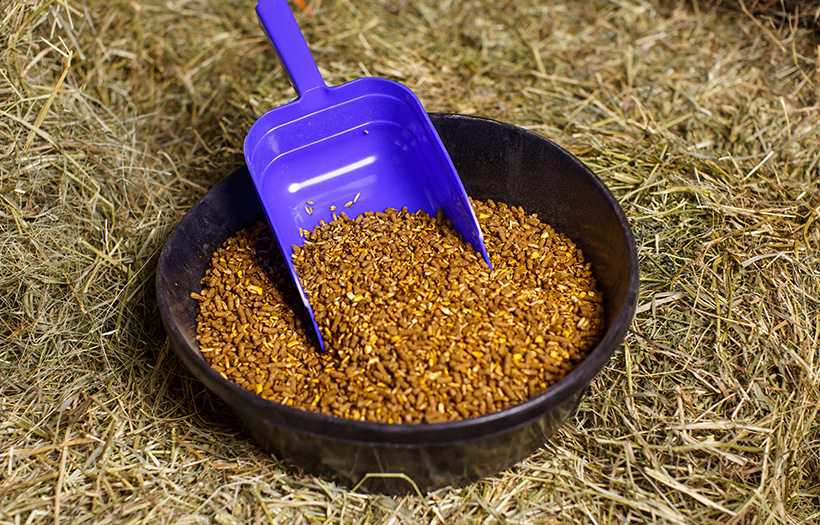Types of Minerals Used in Horse Feeds

In the case of minerals found in a bag of commercially prepared feed, the form of mineral used as an ingredient can be looked at. There are a variety of types of minerals that can be used as ingredients, with varying levels of bioavailability, or ability to be absorbed by the animal, for each of them.
- Inorganic trace minerals, namely oxides and sulfates, are the most common, with oxides having about half the bioavailability of sulfates, except in the case of copper and zinc. These would be seen on a feed tag as “zinc oxide” or “copper sulfate”.
- Organic* trace minerals, namely “chelates” and “complexes”, are two forms of minerals that are gaining popularity in horse feeds due to their increased digestibility.
- Chelates are a mineral molecule tied to a string of general amino acids. These are seen on feed tags as “zinc amino acide chelate”.
- Complexes (the more bioavailable of the two) are minerals tied to a specific amino acid that is known to assist in the availability. These are seen on feed tags as “zinc methionine complex”.
Premium horse feeds often contain one of the two forms of organic trace minerals, as they are the more bioavailable forms. They are generally used in combination with the inorganic forms to acheive the desired level, without skyrocketing the price of the feed.
For more information on trace minerals in horse feed, visit ZinPro’s website – ZinPro is a key supplier of trace minerals in the feed industry.
*Please note that “organic” is not referencing certified organic products like you would purchase at a grocery store – instead it is a scientific reference to the chemical makeup of the mineral.
